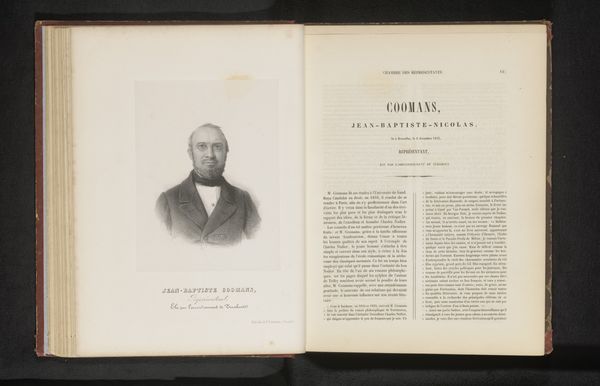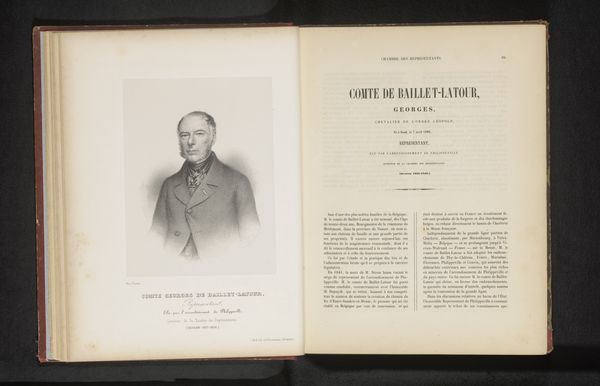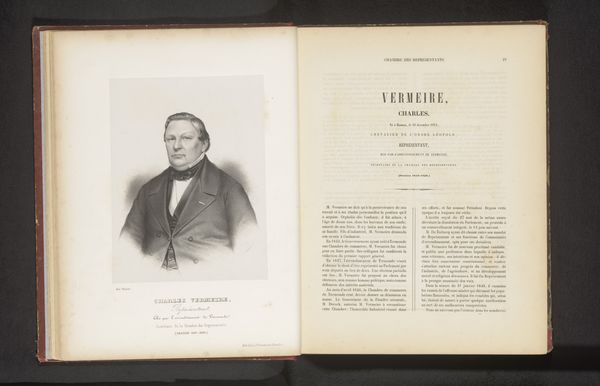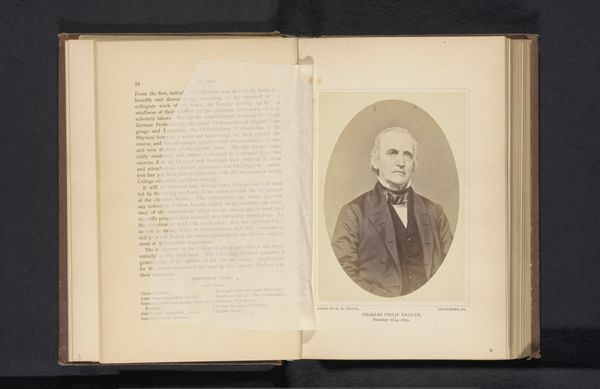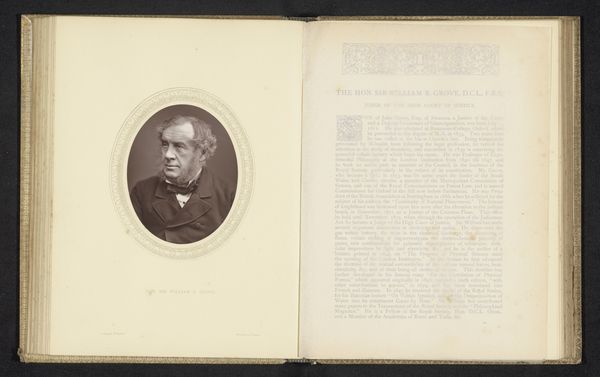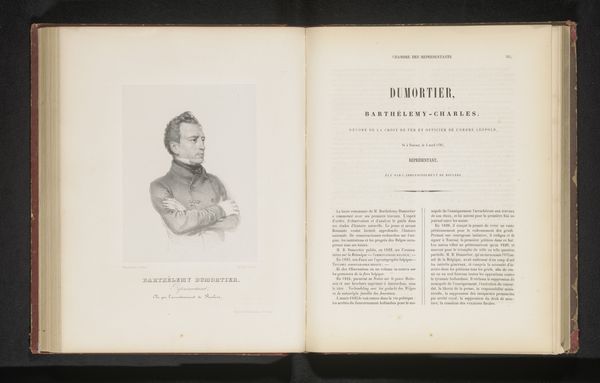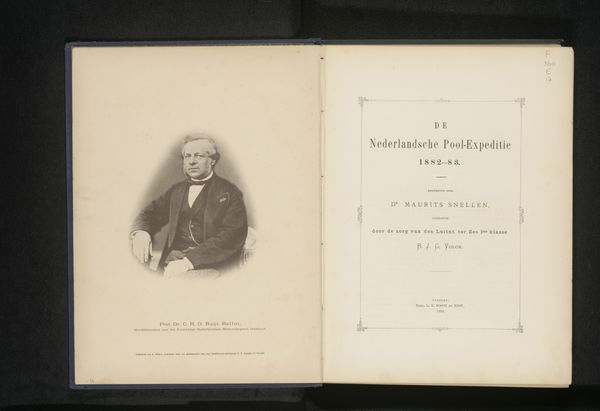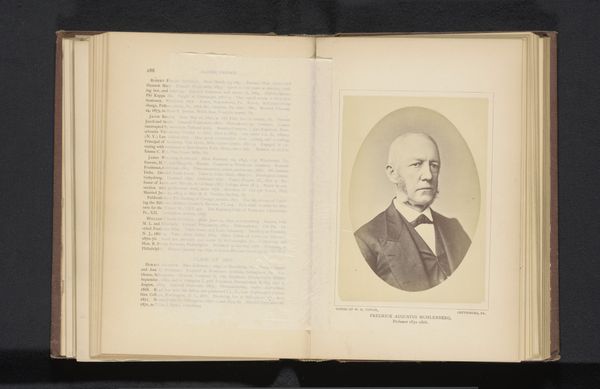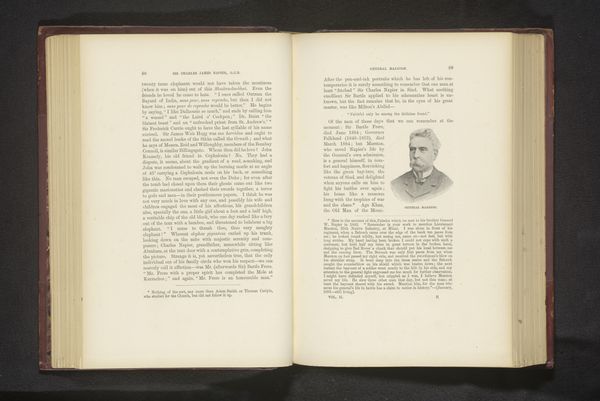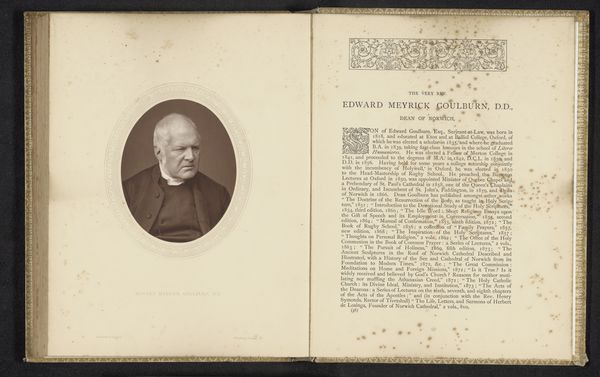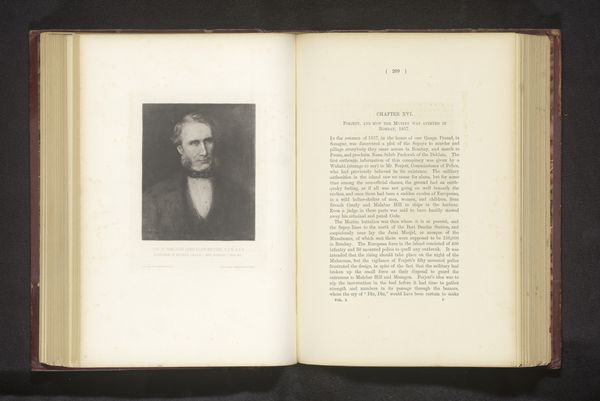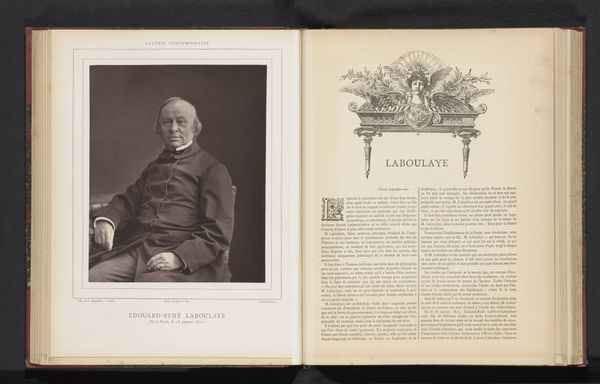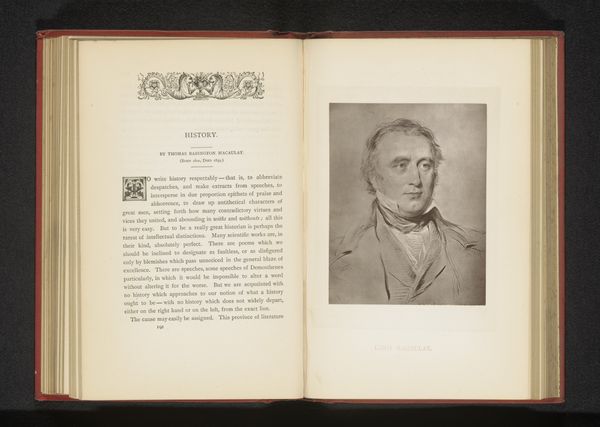
print, etching, photography, engraving
#
portrait
# print
#
etching
#
photography
#
history-painting
#
academic-art
#
engraving
#
realism
Dimensions: height 192 mm, width 139 mm
Copyright: Rijks Museum: Open Domain
Curator: Before us is a reproduction of a photographic portrait of François Dautrebande, likely made before 1858. The work seems to incorporate etching and engraving as well, reproducing a photo that, in turn, produces a likeness. Editor: It strikes me as quite formal, almost stately, befitting someone important. Given the subject’s attire and the printed description adjacent to the image, I’m getting the sense that he’s some sort of historical figure, possibly a politician? How should we approach an image that layers reproductive technologies? Curator: I would start by questioning what "reproduction" meant in this context. Is it about accessibility, democratizing the image of a powerful man? Photography was still relatively new then, etching and engraving even more traditional, but how do these techniques work together? Who was Dautrebande and what did he represent? It appears from the opposite page he was part of the Chamber of Representatives... What class did he belong to? What did he believe in, and for whom did he speak? His position in government indicates some privilege... but who was granted a voice during this era? And perhaps even more urgently, who was silenced or ignored? Editor: That's a great point! Thinking about it from that angle really changes how I see it. Instead of just a formal portrait, it's also a snapshot of a very specific power dynamic from the 19th century. I guess I am thinking, how effective can any kind of representation be? Is it enough? Or should representation work to advocate and transform our society? Curator: Exactly! Consider that this image, created through combined technologies, presents a specific narrative, solidifying Dautrebande's position and, perhaps unconsciously, reinforcing existing social structures. It asks us to actively interrogate not just who is represented but also the mechanisms and ideologies at play when they are represented. What's left out, what are the shadows doing here? What power is invested in the portrait itself? Editor: I see now! So by unpacking the layers of reproduction and considering the historical context, we can better understand the complex interplay of power, representation, and social justice in this work. Thank you.
Comments
No comments
Be the first to comment and join the conversation on the ultimate creative platform.
